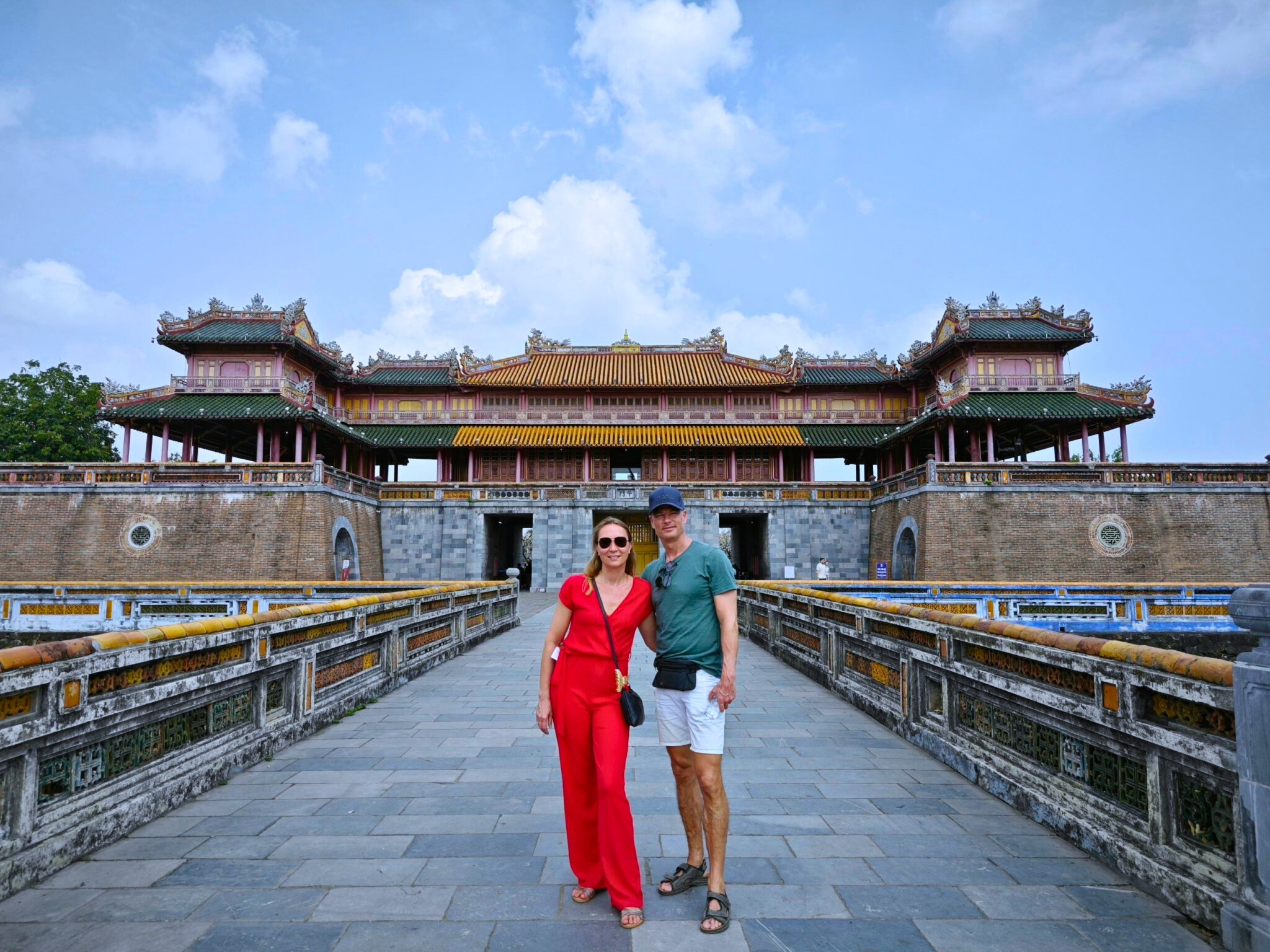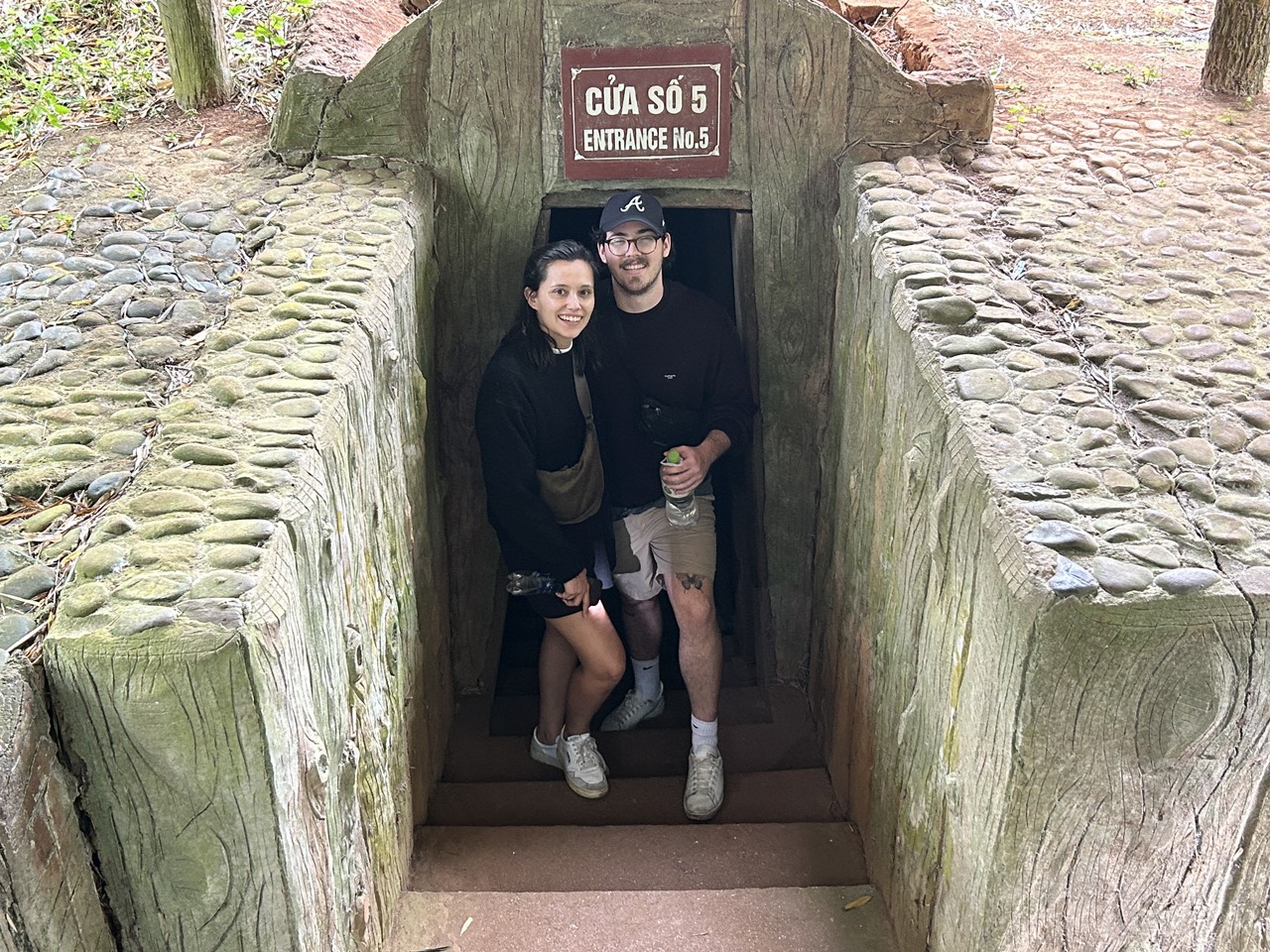Tu Duc Tomb: The Poetic Emperor’s Final Resting Place in Hue, Vietnam
Among the magnificent imperial tombs scattered across Hue’s ancient landscape, Tu Duc Tomb stands as a testament to Vietnamese architectural brilliance and imperial grandeur. Built between 1864 and 1867, this elaborate complex served not only as Emperor Tu Duc’s final resting place but also as his retreat during his lifetime. For travelers exploring Hue’s UNESCO World Heritage sites, understanding this tomb’s unique history and design elevates the experience from a simple visit to a profound cultural journey.
Why Tu Duc Tomb Captivates Modern Visitors
Have you ever wondered why some historical sites resonate more deeply than others? Tu Duc Tomb achieves this through its perfect harmony of architecture, nature, and storytelling. Unlike the imposing fortresses of European monarchs, this tomb complex whispers rather than shouts, inviting contemplation through its serene lakes, pine forests, and pavilions that seem to float on water.

The tomb’s design reflects the emperor’s love for poetry and nature, creating what many consider the most romantic and picturesque of all Hue’s royal tombs. This aesthetic appeal, combined with its fascinating history, makes it an essential stop on any Hue city tour.
Understanding Tu Duc’s Legacy
Emperor Tu Duc ruled Vietnam from 1847 to 1883, making him the longest-reigning monarch of the Nguyen Dynasty. Despite having 104 wives and countless concubines, he left no heir—a fact that deeply troubled him and influenced the tomb’s design. His reign coincided with French colonial expansion, adding layers of political turmoil to his personal struggles.
“A king without an heir is like a tree without fruit—beautiful perhaps, but ultimately failing in its essential purpose.” – From Tu Duc’s personal writings
Key Historical Context
- Reign Period: 1847-1883 (36 years)
- Construction Period: 1864-1867
- Total Area: 12 hectares
- Original Name: Van Nien Co (Eternity)
- Renamed: Khiem Cung (Modesty Palace) by Tu Duc himself
Architectural Marvel: Decoding the Design Elements
What makes Tu Duc Tomb’s architecture so special? The answer lies in its unique blend of functionality and symbolism. The complex includes approximately 50 constructions of various sizes, each serving specific purposes during the emperor’s life and afterlife.
Main Structures and Their Significance
| Structure | Purpose | Unique Features |
|---|---|---|
| Luu Khiem Lake | Recreation & contemplation | Lotus flowers, small islands, rowing pavilion |
| Xung Khiem Pavilion | Reading & poetry composition | Built on stilts over the lake |
| Hoa Khiem Palace | Living quarters | Now houses royal artifacts |
| Minh Khiem Theatre | Entertainment | Oldest surviving royal theatre in Vietnam |
| Buu Thanh | Actual burial site | Location remains unknown |
Planning Your Visit: Practical Information
How can you make the most of your visit to Tu Duc Tomb? Proper planning ensures you experience this historical site’s full magnificence while avoiding common tourist pitfalls.
Essential Visitor Information
- Opening Hours: 7:00 AM – 5:30 PM daily
- Best Time to Visit: Early morning (7:00-9:00 AM) or late afternoon (3:30-5:00 PM)
- Entrance Fee: 150,000 VND (approximately $6.50 USD)
- Location: 6 km south of Hue city center
- Visit Duration: Allow 1.5-2 hours for thorough exploration
Transportation Options
- By Taxi/Grab: 100,000-150,000 VND from city center
- By Motorbike: Rental costs 100,000-150,000 VND/day
- By Bicycle: Scenic 30-minute ride through countryside
- Guided Tour: Includes transportation and expert commentary
Photography Tips: Capturing the Tomb’s Beauty
What makes a great photo at Tu Duc Tomb? The site offers countless opportunities for stunning shots, but knowing where and when to capture them makes all the difference.
Pro Tip: The reflection of Xung Khiem Pavilion in Luu Khiem Lake during golden hour creates one of Vietnam’s most photographed scenes.
Top Photography Spots
- Lake Pavilion Reflections: Best during calm mornings
- Stele Pavilion Steps: Dramatic angles with traditional architecture
- Pine Forest Paths: Atmospheric shots with natural lighting
- Lotus Pond: Peak blooming season from June to August
- Stone Mandarins and Horses: Classic tomb guardian compositions
Cultural Significance: Beyond the Architecture
Understanding Tu Duc Tomb’s cultural importance requires examining its role in Vietnamese heritage. The site represents more than royal grandeur—it embodies the complex relationship between power, mortality, and artistic expression in Vietnamese culture.
According to research from scholarly sources, the tomb’s design philosophy reflects Confucian ideals of harmony between humans and nature, while its melancholic atmosphere mirrors the emperor’s troubled reign during a period of national upheaval.
Combining Tu Duc Tomb with Other Hue Attractions
How can you efficiently explore Tu Duc Tomb alongside other must-see sites? Strategic planning allows you to experience multiple attractions without feeling rushed.
Recommended Itinerary Combinations
| Half-Day Tour | Full-Day Tour | Multi-Day Experience |
|---|---|---|
| Tu Duc Tomb + Khai Dinh Tomb | Tu Duc + Minh Mang + Khai Dinh Tombs | All Royal Tombs + Imperial City + Perfume River |
| 3-4 hours | 6-8 hours | 2-3 days |
| Perfect for limited time | Comprehensive tomb experience | Complete Hue cultural immersion |
For a comprehensive exploration of Hue’s imperial heritage, consider booking a royal tombs tour that includes expert guides who can reveal hidden stories and architectural details often missed by independent visitors.
Local Insights: Hidden Gems and Secret Spots
Beyond the main tourist path, Tu Duc Tomb harbors lesser-known areas that reward curious explorers. These hidden corners offer moments of solitude and discovery even during peak visiting hours.
Off-the-Beaten-Path Discoveries
- Empress Tomb Area: Often overlooked section dedicated to Tu Duc’s mother
- Royal Fish Ponds: Original koi ponds behind the main palace
- Poetry Pavilion Ruins: Remnants of the emperor’s private writing retreat
- Ancient Fruit Gardens: Original longan and lychee trees still bearing fruit
Visitor Experiences: What Travelers Say
What do visitors remember most about Tu Duc Tomb? Common themes emerge from traveler feedback, highlighting aspects that create lasting impressions.
“The tranquility here is unlike any other tourist site in Vietnam. It feels more like a contemplative garden than a tomb.” – Recent visitor review
Consistently Praised Elements
- Peaceful Atmosphere: Less crowded than other royal tombs
- Natural Beauty: Integration with landscape design
- Historical Depth: Compelling story of the melancholic emperor
- Photographic Opportunities: Numerous scenic viewpoints
- Cultural Authenticity: Well-preserved traditional architecture
Practical Tips for the Best Experience
How can you avoid common mistakes when visiting Tu Duc Tomb? These insider tips help ensure a smooth, enriching experience.
Do’s and Don’ts
| Do | Don’t |
|---|---|
| Wear comfortable walking shoes | Touch or climb on ancient structures |
| Bring sun protection and water | Feed fish in the royal ponds |
| Hire a guide for historical context | Use flash photography inside buildings |
| Visit early or late for best photos | Bring large bags (storage limited) |
| Respect quiet zones for contemplation | Fly drones without permission |
Conclusion: Why Tu Duc Tomb Deserves Your Time
Tu Duc Tomb offers more than a glimpse into imperial Vietnam—it provides a meditation on power, mortality, and the human desire for beauty even in death. Whether you’re a history enthusiast, architecture lover, or simply seeking peaceful moments in your travels, this remarkable site delivers experiences that linger long after your visit.
The combination of historical significance, architectural beauty, and natural harmony makes Tu Duc Tomb an essential component of any Hue itinerary. As you plan your journey through Vietnam’s imperial capital, allocate sufficient time to fully appreciate this poetic emperor’s lasting legacy. For those seeking deeper understanding of Vietnamese culture and history, few sites offer such rich rewards for patient exploration.
Ready to explore Tu Duc Tomb and other magnificent sites in Hue? Contact SAMTOUR VIETNAM to arrange guided tours that reveal the hidden stories and cultural significance behind these remarkable monuments. Our expert guides ensure you experience not just the sites, but the soul of imperial Vietnam.
Planning Your Visit: Practical Information
How can you make the most of your visit to Tu Duc Tomb? Proper planning ensures you experience this historical site’s full magnificence while avoiding common tourist pitfalls.
Essential Visitor Information
- Opening Hours: 7:00 AM – 5:30 PM daily
- Best Time to Visit: Early morning (7:00-9:00 AM) or late afternoon (3:30-5:00 PM)
- Entrance Fee: 150,000 VND (approximately $6.50 USD)
- Location: 6 km south of Hue city center
- Visit Duration: Allow 1.5-2 hours for thorough exploration
Transportation Options
- By Taxi/Grab: 100,000-150,000 VND from city center
- By Motorbike: Rental costs 100,000-150,000 VND/day
- By Bicycle: Scenic 30-minute ride through countryside
- Guided Tour: Includes transportation and expert commentary
Photography Tips: Capturing the Tomb’s Beauty
What makes a great photo at Tu Duc Tomb? The site offers countless opportunities for stunning shots, but knowing where and when to capture them makes all the difference.
Pro Tip: The reflection of Xung Khiem Pavilion in Luu Khiem Lake during golden hour creates one of Vietnam’s most photographed scenes.
Top Photography Spots
- Lake Pavilion Reflections: Best during calm mornings
- Stele Pavilion Steps: Dramatic angles with traditional architecture
- Pine Forest Paths: Atmospheric shots with natural lighting
- Lotus Pond: Peak blooming season from June to August
- Stone Mandarins and Horses: Classic tomb guardian compositions
Cultural Significance: Beyond the Architecture
Understanding Tu Duc Tomb’s cultural importance requires examining its role in Vietnamese heritage. The site represents more than royal grandeur—it embodies the complex relationship between power, mortality, and artistic expression in Vietnamese culture.
According to research from scholarly sources, the tomb’s design philosophy reflects Confucian ideals of harmony between humans and nature, while its melancholic atmosphere mirrors the emperor’s troubled reign during a period of national upheaval.
Combining Tu Duc Tomb with Other Hue Attractions
How can you efficiently explore Tu Duc Tomb alongside other must-see sites? Strategic planning allows you to experience multiple attractions without feeling rushed.
Recommended Itinerary Combinations
| Half-Day Tour | Full-Day Tour | Multi-Day Experience |
|---|---|---|
| Tu Duc Tomb + Khai Dinh Tomb | Tu Duc + Minh Mang + Khai Dinh Tombs | All Royal Tombs + Imperial City + Perfume River |
| 3-4 hours | 6-8 hours | 2-3 days |
| Perfect for limited time | Comprehensive tomb experience | Complete Hue cultural immersion |
For a comprehensive exploration of Hue’s imperial heritage, consider booking a royal tombs tour that includes expert guides who can reveal hidden stories and architectural details often missed by independent visitors.
Preservation Efforts and Future Challenges
What threatens Tu Duc Tomb’s preservation, and how are authorities addressing these challenges? Like many historical sites, the tomb faces ongoing conservation issues that require careful balance between tourism and protection.
- Climate Impact: Monsoon rains and humidity affect stone structures
- Tourist Pressure: Over 1 million annual visitors create wear
- Funding Needs: Continuous restoration requires substantial investment
- Expertise Requirements: Traditional craftsmanship skills are increasingly rare
Local Insights: Hidden Gems and Secret Spots
Beyond the main tourist path, Tu Duc Tomb harbors lesser-known areas that reward curious explorers. These hidden corners offer moments of solitude and discovery even during peak visiting hours.
Off-the-Beaten-Path Discoveries
- Empress Tomb Area: Often overlooked section dedicated to Tu Duc’s mother
- Royal Fish Ponds: Original koi ponds behind the main palace
- Poetry Pavilion Ruins: Remnants of the emperor’s private writing retreat
- Ancient Fruit Gardens: Original longan and lychee trees still bearing fruit
Visitor Experiences: What Travelers Say
What do visitors remember most about Tu Duc Tomb? Common themes emerge from traveler feedback, highlighting aspects that create lasting impressions.
“The tranquility here is unlike any other tourist site in Vietnam. It feels more like a contemplative garden than a tomb.” – Recent visitor review
Consistently Praised Elements
- Peaceful Atmosphere: Less crowded than other royal tombs
- Natural Beauty: Integration with landscape design
- Historical Depth: Compelling story of the melancholic emperor
- Photographic Opportunities: Numerous scenic viewpoints
- Cultural Authenticity: Well-preserved traditional architecture
Practical Tips for the Best Experience
How can you avoid common mistakes when visiting Tu Duc Tomb? These insider tips help ensure a smooth, enriching experience.
Do’s and Don’ts
| Do | Don’t |
|---|---|
| Wear comfortable walking shoes | Touch or climb on ancient structures |
| Bring sun protection and water | Feed fish in the royal ponds |
| Hire a guide for historical context | Use flash photography inside buildings |
| Visit early or late for best photos | Bring large bags (storage limited) |
| Respect quiet zones for contemplation | Fly drones without permission |
Conclusion: Why Tu Duc Tomb Deserves Your Time
Tu Duc Tomb offers more than a glimpse into imperial Vietnam—it provides a meditation on power, mortality, and the human desire for beauty even in death. Whether you’re a history enthusiast, architecture lover, or simply seeking peaceful moments in your travels, this remarkable site delivers experiences that linger long after your visit.
The combination of historical significance, architectural beauty, and natural harmony makes Tu Duc Tomb an essential component of any Hue itinerary. As you plan your journey through Vietnam’s imperial capital, allocate sufficient time to fully appreciate this poetic emperor’s lasting legacy. For those seeking deeper understanding of Vietnamese culture and history, few sites offer such rich rewards for patient exploration.
Ready to explore Tu Duc Tomb and other magnificent sites in Hue? Contact SAMTOUR VIETNAM to arrange guided tours that reveal the hidden stories and cultural significance behind these remarkable monuments. Our expert guides ensure you experience not just the sites, but the soul of imperial Vietnam.




